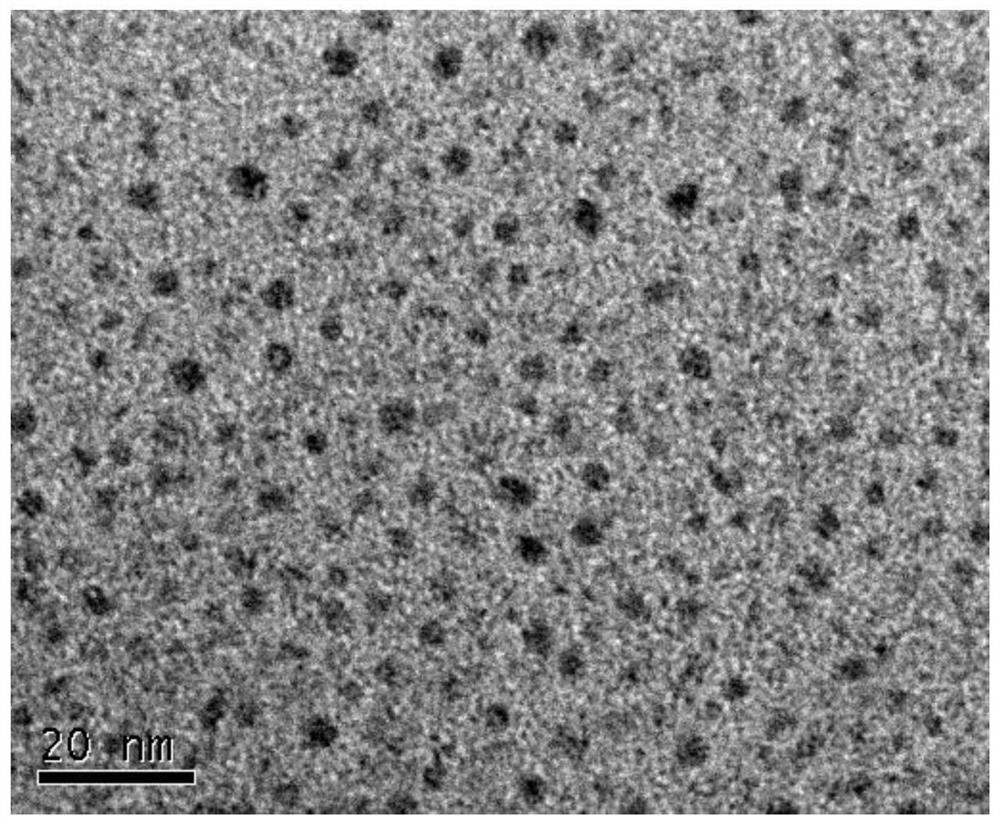A kind of glucose photoelectrochemical sensor and its preparation method and application
A photoelectrochemical and glucose technology, applied in the field of glucose detection, can solve the problems of loss of catalytic activity, high price, structural changes, etc., and achieve the effect of simple preparation method, low cost and high environmental tolerance
- Summary
- Abstract
- Description
- Claims
- Application Information
AI Technical Summary
Problems solved by technology
Method used
Image
Examples
Embodiment 1
[0039] Embodiment 1, the preparation of glucose photoelectrochemical sensor
[0040] Preparation of lead sulfide quantum dots: Dissolve 0.16mmol of lead acetate in 50mL of ultrapure water, deoxygenate by nitrogen for 30min; into, and adjust the pH of the solution with 1mol / L NaOH to be 11.0±0.5; add 0.015mol / L NaOH 2 4 mL of S solution was slowly added into the solution, and the solution immediately changed from colorless to brown, and the reaction mixture was stirred for 3 h under a nitrogen atmosphere to obtain a lead sulfide solution, which was finally stored in a refrigerator at 4 °C. figure 1 It is a transmission electron microscope picture of the synthesized lead sulfide quantum dots, and the obtained lead sulfide quantum dots have a particle size of 3-7 nm.
[0041] Synthesis of silica: add 1mL tetraethyl orthosilicate (TEOS) to a mixture of 35.7mL ethanol, 5mL water and 0.8mL ammonia water, stir at 30°C for 24h, wash the product with water and ethanol; then disperse i...
Embodiment 2
[0055] Embodiment 2, the photoelectrochemical sensor detects the glucose sample
[0056] The method for detecting the glucose sample by the photoelectrochemical sensor comprises the following steps:
[0057] 1. In the buffer solution, the glucose photoelectrochemical sensor was used as the working electrode, the platinum wire electrode was used as the auxiliary electrode, and the saturated calomel electrode was used as the reference electrode. Oxygen was introduced for 5 minutes. By controlling the irradiation and closing of the excitation light source, the determination The electrochemical signal of the working electrode was used to obtain the photocurrent value. Wherein, the buffer solution is tris-HCl solution (Tris-HCl), the concentration of the tris solution is 0.01-0.2mol / L, and the pH of the tris solution is 7.0-7.4; The excitation light source is an LED lamp, and the center wavelength of the LED lamp is 400-500nm.
[0058] 2. Adding the glucose sample solution into t...
PUM
| Property | Measurement | Unit |
|---|---|---|
| particle diameter | aaaaa | aaaaa |
| particle diameter | aaaaa | aaaaa |
| wavelength | aaaaa | aaaaa |
Abstract
Description
Claims
Application Information
 Login to View More
Login to View More - R&D
- Intellectual Property
- Life Sciences
- Materials
- Tech Scout
- Unparalleled Data Quality
- Higher Quality Content
- 60% Fewer Hallucinations
Browse by: Latest US Patents, China's latest patents, Technical Efficacy Thesaurus, Application Domain, Technology Topic, Popular Technical Reports.
© 2025 PatSnap. All rights reserved.Legal|Privacy policy|Modern Slavery Act Transparency Statement|Sitemap|About US| Contact US: help@patsnap.com



